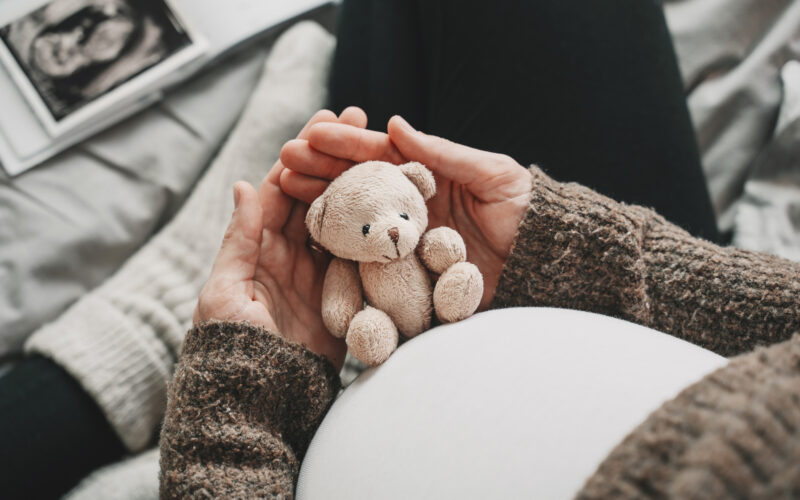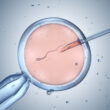(Author’s Note: This article discusses pregnancy loss and may not be appropriate for some readers because of the sensitive content. If you are struggling with a pregnancy loss, this article may be difficult to read.)
For too many couples, infertility can make happy visions of starting a family together seem impossible. The CDC estimates that as many as 1 in 5 women (19%) trying to conceive for the first time are unable to do so, even after trying for twelve months. Assisted reproductive technology (ART), and specifically in vitro fertilization (IVF), may seem like the only way to restore a couple’s dreams of starting a family. However, IVF often does not deliver on its promise. The majority of IVF cycles do not end in a pregnancy. And those that do have an increased likelihood of complications, such as stillbirth, for both mother and child.
How much does IVF increase stillbirth risk?
A stillbirth is defined as pregnancy loss after the baby has reached 20 weeks gestation. (Pregnancy loss that occurs prior to 20 weeks is referred to as a miscarriage.) Research has found that the risk of stillbirth is around 0.37% for a naturally conceived pregnancy [1]. In other words, a little more than 3 in every 1,000 naturally-conceived pregnancies end in stillbirth. By contrast, the risk of stillbirth is about 1.62% for IVF-conceived pregnancies, which means a little more than 1 in 100 IVF-conceived pregnancies end in stillbirth [1]. That means that, while the overall risk of stillbirth is low regardless of how a pregnancy is achieved, the risk of a pregnancy achieved via IVF ending in stillbirth is over four times that of a naturally conceived pregnancy. Crucially, this difference in stillbirth rates remains even after adjusting for maternal age, BMI, education, smoking habits, and alcohol and coffee intake during pregnancy.
Some might point out that IVF-conceived pregnancies may be more likely to be high-risk (e.g., include multiple babies, include mothers of an advanced age, etc.) than naturally or spontaneously conceived pregnancies. This is a valid point. Still, research suggests that even low-risk term pregnancies are more likely to end in stillbirth following IVF [2].
Women and couples deserve to know all the risks of IVF, no matter how small
All things considered, 1.6% is a relatively small chance. But couples who are considering IVF should receive education on all the risks. Pregnancy loss at any stage is devastating. To conceive through IVF after struggling with infertility, carry the pregnancy nearly to term, and then lose their child to stillbirth is something no couple should ever be blindsided by.
One hopes fertility treatment providers are doing everything they can to deliver a solution that gives women as high a chance as possible at conceiving and delivering a healthy baby. But research has not yet answered the key question of whether the increased risk of stillbirth is due to IVF itself, or due to the mother or father’s preexisting conditions that caused infertility in the first place.
What we do know is this: IVF doesn’t solve whatever underlying health problems may exist for the woman or man that may be causing their inability to conceive. Infertility is often “downstream” of another medical or hormonal issue which is actually at the root of a couple’s difficulty conceiving. To further complicate the matter, the cause of stillbirth often goes unexplained even for natural pregnancies. Researchers are unable to determine a cause in nearly a quarter of cases, according to the National Institute of Child Health and Development.
How could IVF increase the risk of stillbirth?
Frozen vs. fresh embryos
It’s worth noting that there are multiple ways IVF can be done. One of the main variables is whether fresh or frozen embryos are used. Around one-third of IVF cycles each year use frozen embryo transfer (FET). FET may carry a higher risk of stillbirth than IVF using fresh embryos, based on this Swedish study [3]. Research has shown a heightened risk of developing hypertensive disorders in pregnancies following FET, and high blood pressure disorders like preeclampsia are a leading cause of stillbirth in the U.S. Even mothers carrying IVF-conceived pregnancies who did not experience high blood pressure or preeclampsia in previous, naturally conceived pregnancies are at risk [4].
On one hand, the technology involved in IVF has progressed significantly in the decades since it was first introduced [5]. On the other hand, there’s a dearth of evidence as to what actually causes higher rates of stillbirth and other complications in IVF-conceived pregnancies. Many of the aforementioned studies chalk the discrepancy up to either the higher rate of multiplicity (i.e., pregnancies with multiple babies) with IVF pregnancies, or the IVF-utilizing couple’s pre-existing conditions. The latter certainly makes intuitive sense, but it is a very unsatisfying explanation to blame the pitfalls of so-called treatment for infertility on… infertility.
If you’ve been unable to conceive, ART isn’t your only option
Couples who have been trying unsuccessfully (so far) to conceive should not lose hope! There are highly effective alternatives to IVF and other ART procedures that anyone struggling with infertility has the right to know about. Fertility awareness can allow women to start reading their cycles as their “fifth vital sign,” gaining essential knowledge about their overall health in addition to their reproductive health. Restorative reproductive medicine (RRM) seeks to uncover the root causes of infertility, and help couples avoid the unnecessary heartbreak, financial loss, and potentially weighty complications of IVF. Moreover, healthcare providers trained in RRM can help women combat the feelings of helplessness and inadequacy that often accompany infertility, by helping them understand their own bodies and feel empowered to improve their overall health in the process.
References:
[1] Wisborg, K et al. “IVF and stillbirth: a prospective follow-up study.” Human reproduction (Oxford, England) vol. 25,5 (2010): 1312-6. doi:10.1093/humrep/deq023 [2] Bay, B et al. “Risk of stillbirth in low-risk singleton term pregnancies following fertility treatment: a national cohort study.” BJOG : an international journal of obstetrics and gynaecology vol. 126,2 (2019): 253-260. doi:10.1111/1471-0528.15509 [3] Antonina Sazonova and others, Obstetric outcome in singletons after in vitro fertilization with cryopreserved/thawed embryos, Human Reproduction, Volume 27, Issue 5, May 2012, Pages 1343–1350, https://doi.org/10.1093/humrep/des036 [4] H Petersen, Sindre et al. “Risk of Hypertensive Disorders in Pregnancy After Fresh and Frozen Embryo Transfer in Assisted Reproduction: A Population-Based Cohort Study With Within-Sibship Analysis.” Hypertension (Dallas, Tex. : 1979) vol. 80,2 (2023): e6-e16. doi:10.1161/HYPERTENSIONAHA.122.19689 [5] Eskew AM, Jungheim ES. A History of Developments to Improve in vitro Fertilization. Mo Med. 2017 May-Jun;114(3):156-159. PMID: 30228571; PMCID: PMC6140213.Additional Reading:
What causes stillbirth?: What we know and don’t know
IVF and Restorative Reproductive Medicine stories: What they have in common, and how they differ







